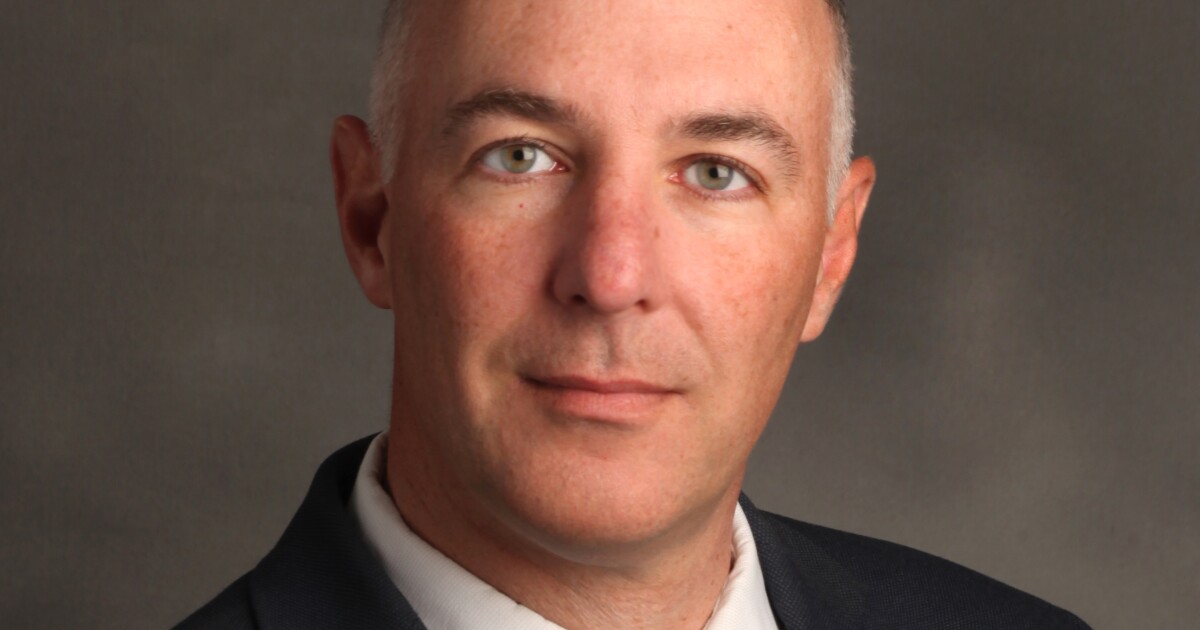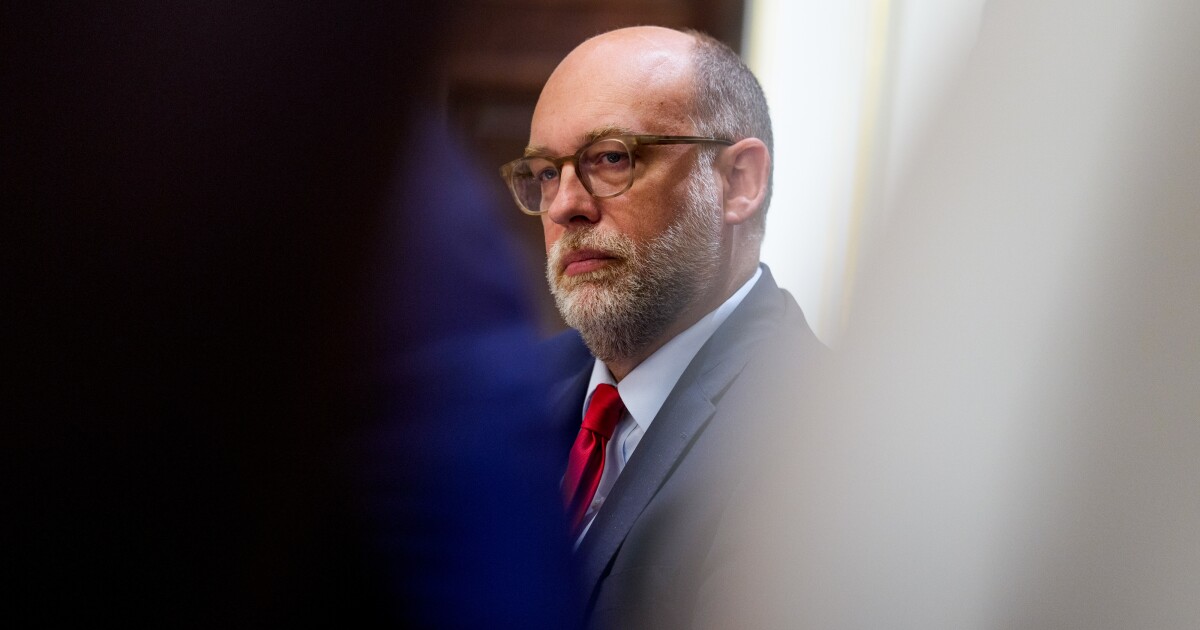
This week's Federal Open Market Committee meeting will be of interest to market participants despite the unlikelihood of any changes in monetary policy, since a new Summary of Economic Projections will be released and will provide insight into officials' thinking on fed fund target levels for next year.
The market is pricing in about five rate cuts.
The last SEP suggested a 5.1% rate at the end of 2024 and the market now sees the fed funds rate ending next year at 4.1%. Brian Rehling, head of Global Fixed Income Strategy at Wells Fargo Investment Institute, during the company's 2024 Outlook, called it a "pretty big disconnect right now."
And while the new dot plot's median projection should "come down a little bit," he said, it will be "nowhere close to where the market is expecting."
The Fed will remain cautious, Rehling noted, since "they really have to defend against any potential reemergence of inflation such as we saw in the early 1980s," even though no signs have emerged.
"We're still not down that last mile toward the Fed's target of 2%," he added. "Inflation is a bit of a challenge. I think it's again, a continued heavy lift. So I just don't think the Fed is going to be as aggressive cutting rates, as the market currently expects."
Rehling's base case calls for the Fed cutting twice next year, beginning in the summer. "But I do acknowledge we could get in a situation where the economy rolls over harder" and the Fed "actually has to do more than the market's expecting.
"Or there's also the possibility that the economy is more resilient than many are expecting, and inflation reemerges and the Fed may actually have to hike rates by the end of next year," he said.
The market rally over the last roughly month and a half "makes the Fed's job more challenging," Rehling added.
ING Chief International Economist, James Knightley agrees with expectations for two rate cuts next year. Friday's jobs report suggested "a cooling, but not collapsing jobs market, and is therefore consistent with the soft-landing narrative."
Wells Fargo Securities Senior Economists Sarah House and Michael Pugliese expect a summer rate cut, since "an improving inflation outlook and gradually softening labor market present balanced risks for the FOMC."
While the post-meeting statement should be little changed, David Kelly, chief global strategist at JPMorgan Asset Management, said, "The Fed may acknowledge that recent indicators suggest that economic activity is now expanding at a moderate pace rather than the strong 5.2% gain seen in the third quarter."
But officials will be cognizant that "10-year Treasury yields have fallen by 60 basis points and that the S&P 500 has risen by almost 10%," he said. "They will not want to encourage a further easing in financial conditions and so they are likely to retain language about inflation being elevated and their implied tightening bias."
"Significant changes" remain likely in the SEP, according to Kelly. He sees the unemployment rate projection growing to 4.1% by Q4 both next year and in 2025. "However, we expect only a modest cut to inflation expectations for 2024 from 2.5% to 2.4%."
As for rates, "they will have to cut their estimate year-end projection for 2023 from 5.6% to 5.3%," Kelly said. "However, they may well leave their year-end 2024 target of 5.1% unchanged as they try to reiterate a message of higher-for-longer, at least for now."
Expect Powell "to double-down on a cautious approach to easing," he said. "He will undoubtedly acknowledge progress on growth and inflation and may well characterize the runway for a soft landing as widening. However, he will not want to trigger any further rally in the stock and bond markets towards the end of the year and, consequently, his remarks may express more confidence in the outlook for real economic growth and more doubt about the decline in inflation than he really feels or the data warrant."
But the Fed is unlikely to meet market expectations on cuts, said Greg Wilensky, head of U.S. fixed income at Janus Henderson Investors. "While we expect the median fed funds dot for year-end 2024 will be lower than the September projection of 5.13%, it will likely not fall as far as the futures market is implying."
But not everyone is on board.
Friday's employment report was "healthy," noted Gary Quinzel, vice president of portfolio consulting at Wealth Enhancement Group, "that in no way supports the need for the Fed to cut rates soon, especially since inflation is still well above their 2% target."
With fourth-quarter gross domestic product expected to show growth, unemployment remaining low and inflation trending down, it sets "a Goldilocks scenario where doing nothing seems like the prudent approach," he said. "The market's furious stock and bond rally likely overreached in November predicting rate cuts would come sooner rather than later."
Still, Quinzel sees a slowing economy next year, "that may or may not end up being defined as a recession."
In his press conference after the FOMC meeting, Fed Chair "Jerome Powell will need to push back hard … on the rate-cut narrative that has taken hold in recent weeks," said
Sean Snaith, director of the University of Central Florida's Institute for Economic Forecasting, said the employment market needs to cool or "the Fed may be forced to hike interest rates again in the coming months."
But Michael Gregory, BMO Deputy Chief Economist, looks at the Fed adding "financial" to tighter credit conditions. The Fed added "financial" after the "last meeting, given noticeably higher bond yields at the time. Although yields and broader financial conditions have cooled meaningfully since then, partly in anticipation of more aggressive Fed easing next year, retaining the word conveys the FOMC's probable disapproval of the degree to which financial conditions have eased."
Additionally, despite the rally, "bond yields are still historically high," Gregory said.
With the Fed "keeping the door open for another rate hike — even if the threshold is unlikely to be crossed — is another way to say that the rate cut door is closed for the time being," he said. "Besides, with the latest data showing real GDP growth above potential, unemployment below the natural rate and inflation above target, maintaining a mild tightening bias is also appropriate from a risk management perspective."
As for the dot plot, he expects the one possible rate hike by yearend will be removed and the two rate cuts for next year will remain in the projections.
"With PCE core inflation annualizing at 2.4% over the past three months and 2.5% over the past six months, the Fed is becoming increasingly confident that it has won the war against inflation," said Steven L. Skancke, chief economic adviser at Keel Point and former White House and Treasury Department staff member. "So, the internal discussion at the Fed is when and by how much to start reducing its policy rate and the so-called dot plot will signal where the FOMC members are in this respect."
All eyes are on the SEP.
"Fed Governor [Christopher Waller] last week (Nov. 28) spurred discussion around the Fed cutting rates as early as at its March 2024 meeting to mitigate the interest rate and monetary policy drag," Skancke said. "Even after Fed Chair Powell tried to damp the market enthusiasm on this point, the belief is growing that the Fed will start cutting early next year as the data confirm the current trend of PCE core inflation settling back to 2%."
Consumers, he noted, expect inflation to drop in the next year in the face of a cooling labor situation.
"Productivity gains over the past 12 months of 2.4% offsets the continuing 4% growth rate in average hourly earnings enough to support the Fed's 2% inflation target," Skancke said.



